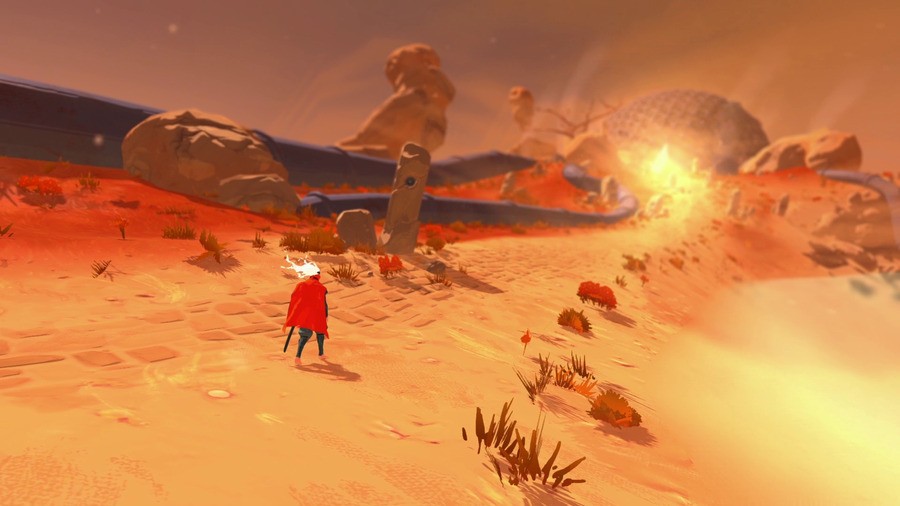
Regular readers will know that we've got high hopes for Furi, an upcoming PlayStation 4 action title from independent developer The Game Bakers. Featuring an eye-catching visual style, blistering combat, and one hell of a soundtrack, the release is set to get your pulse pounding when it launches later this year. We caught up with creative director Emeric Thoa, and talked about the inspiration behind Furi, its development, and the studio's relationship with Sony.
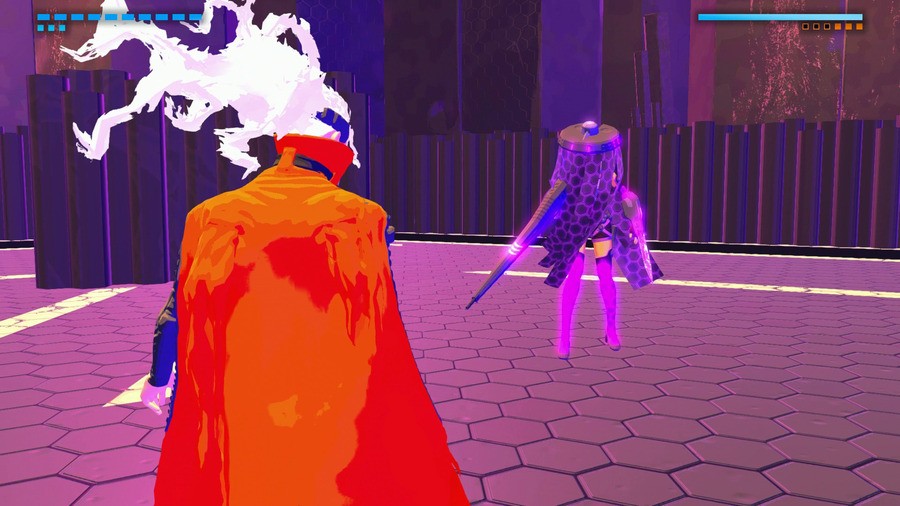
Push Square: To start off with, can you describe what Furi is, and how it plays?
Emeric Thoa: Furi is a boss fight game, if anything. It's a game about fighting a formidable opponent, in a duel to the death. The boss fights are not like in God of War, where you are like David against Goliath, fighting a gigantic god-creature. In Furi, you are an extremely strong character fighting a extremely strong adversary. The tension comes from the fact that the two opponents are somewhat similar. The gameplay is extremely fast-paced and responsive – it's a skill-based game that requires reflex and timing.
How did Furi come about, and what did you want to achieve with the game?
Furi is a project that I had in mind for years. The fantasy was "a long, intense, eight hour boss fight, against fascinating characters". At the very beginning it was just that, but it became much more during the project's development. Furi is not about beating an empty shell character - it's asking a question in each of its boss fights: for what reason would you enter a duel? For what reason would you risk your life, or kill an opponent? In Furi, every character has a reason to fight. There is a strong meaning in the game that I think adds a lot to the very hectic arcade gameplay.

Gameplay-wise, Furi appears to be made up of various elements. What were your inspirations when creating the game's combat and general gameplay structure?
Furi combines two core gameplay mechanics: the dual-stick shooter and the beat-'em-up sword fight. The reason I wanted these two gameplay mechanics was to ensure I could make a game that's deep enough and varied enough. With these two mechanics, we have opponents that can challenge the player in many different ways. Long range with the shooting, close range with the sword fighting; we can combine the two to create tons of interesting patterns. For the shooting part, the inspirations were, well, shoot-'em-ups! But for the sword fighting part, it was mostly inspired by Super Punch-Out!! – the simple concept of dodging/blocking then punishing – and... tennis! I see tennis like a gladiator game: two fighters are in an arena, have a weapon in hand and exchange strokes that require timing, reflexes, and tactics. Except for the ball, it's very close to fencing!
Furi is clearly quite an intense game, but has accessibility ever been a talking point during development? Are there easier difficulty levels, for example, or is Furi all about the rush that you get from such challenging boss battles?
That's very well said: Furi is all about the rush you get by a challenging boss battle. I like to think that we are not doing things halfway. You'll get a big rush of adrenaline and love the game, or you won't play it – it will not be in the middle. For players who are interested in the story, the music, the environment, there is an easier difficulty level that's called "Promenade". It really cuts all the challenge and makes Furi a great experience, but takes away the "intense" gameplay. It's not an easy mode, it's really... a promenade! The game strongly recommends you play in the "Furi" difficulty mode. And we have a "Furier" difficulty mode as well – that's for extremely trained players. The cool thing is that we didn't just increase the damage in this mode, we changed the combat patterns as well. It's a whole new challenge for hardcore players!
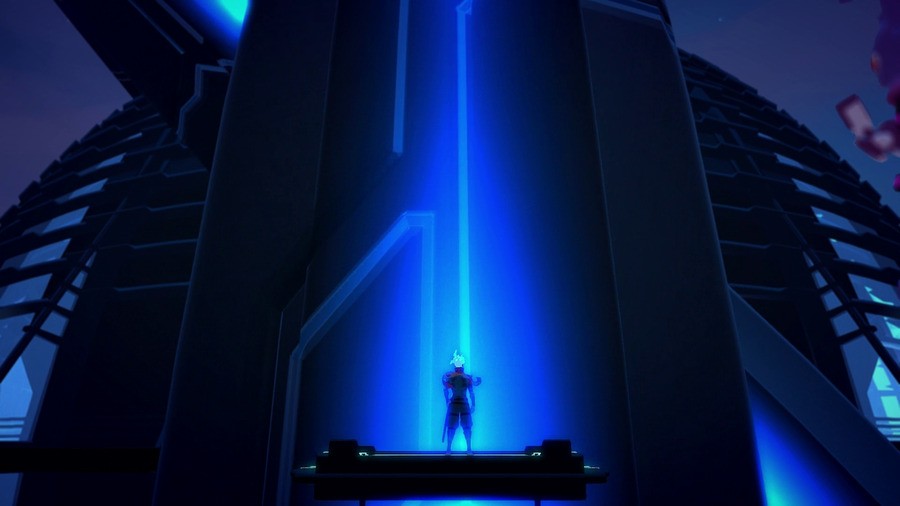
Style seems to be big part of Furi, and famed Afro Samurai creator Takashi Okazaki is behind the game's character designs. How important do you think it is for games to have a recognizable and well crafted visual style?
I'd say that, with so many games coming out these days, it's an absolute necessity. A game must be outstanding in some way to exist and be noticed by the audience. Very few games manage to do that without having a unique style. It doesn't need to be beautiful or photorealistic, but it needs to be unique. In Furi, we wanted the art direction to be outstanding and we chose this stylized approach, but we also wanted the character design to be from one of the best in the world, so that the player always wants to discover the next boss.
Speaking of Takashi Okazaki, how did you end up working with him? What was it like working with such a well known artist?
We contacted him by email and pitched the project to him. We were amazed to get his answer and that he was interested in the project. I briefed him on some of the characters for the game and he sent some sketches back... and my jaw dropped! It was like that all the time, when I saw that I had a email from Takashi in my inbox it was like a Christmas present – I felt like I was "unwrapping" the email and I was super excited to see what was inside. He came to Montpellier in France to work with us for a while and I went to work with him in Tokyo. He always had very interesting ideas and feedback about the characters and the game. He is an extremely nice person, and he cooked a delicious Japanese meal for me. I couldn't ask for more.
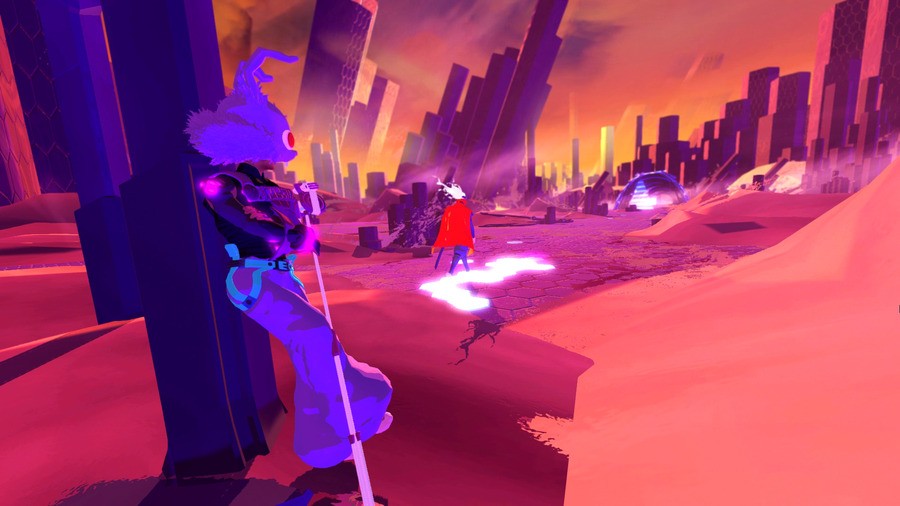
Similarly, Furi's soundtrack really seems to stand out. Again, how important do you think music is to an action game like Furi? Can a fitting soundtrack go a long way in making a game even more enjoyable?
We tried to achieve this "outstanding" objective in every area of the game: gameplay, art, music, and story. I am very lucky because when I described Takashi's artworks feeling like Christmas presents, I felt exactly the same with Carpenter Brut's music, along with the music from our other musicians. The music in the game is incredible and totally supports the gameplay. It gives an energy; it sets you in a combative mood that makes you want to retry and never quit until you have defeated the boss. I also like to think that a soundtrack becomes even more memorable with a challenging game, because overcoming a very difficult challenge gives a lot of pleasure – the moment you do it becomes memorable. Later on, listening to the soundtrack will make you remember this pleasure and it will never leave you.
As you've mentioned, the soundtrack features music from artists such as Carpenter Brut. Why did you decide to go for music from existing artists, and what was it like working with them?
There is a part on the game that happens before the fight that we call "the path". It's an audiovisual experience where you walk on a way, accompanied by the mysterious rabbit-masked character that acts a bit like a coach. It's a place for the story and for building the pre-combat tension, like a boxer walking towards the ring. We wanted to make this experience a bit like a video clip. When I was designing the game I was always listening to music and seeing sequences like that and that's what made us want to work with existing artists. Carpenter Brut made the first tracks for the very early prototypes and it was such a perfect match! Working with all these musicians was a lot of work, because it's remote work and we need to communicate sometimes on content that is not yet created, and explain game development concept that they are sometimes not used to – but the result is incredible. Every week, during our team meetings, someone was asking "did we get a new track this week?" The soundtrack is a huge part of the game but it was also a huge part of the game development it gave us a great vibe and energy while working!
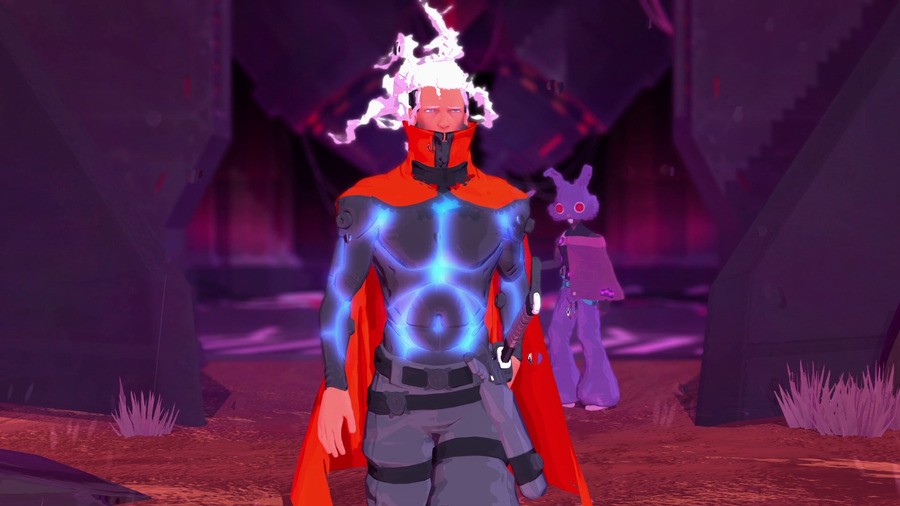
Independent titles now make up a large portion of the PS4's library, and Sony's often praised for its treatment of independent studios. Has Sony had an impact on your own studio? Can you tell us anything about the relationship that you have with the company as an independent developer?
Sony was a partner from the beginning. They loved the project when we pitched it and helped us in many ways since then. We have contacts there who facilitate a lot of the publishing issues we can run into and gave us feedback during the development. Furi is also very Japanese in its design and I think it's a good fit on a console that has a good line up of Japanese video games.
Are you looking forward to Furi? Are you a fan of its art style, or its music? Draw your sword and cut through the comments section below.
[ Thanks to Emeric Thoa for answering our questions, and thanks to Audrey Leprince and everyone at The Game Bakers for making this interview possible ]





Comments 8
Sounds great! Looking forward to this one.
Good interview! Cheers Rob.
This looks very promising. Refreshing even. Can't wait to see how it turns out.
The art style reminds me of PS2 SMT games, I could really go for some of those but this ain't that, well maybe a little like maken X.
This actually looks REALLY cool, and I love the art style. It's amazing how many of my most anticipated games are Indy developed. Hyper Light Drofter, NMS, Furi, HellBlade, Below. So glad we get a mix of AAA and Indy games this gen to mix things up a little.
Whens this out? Love twin stick shooters. The fighting elements taking from Punch out on the Snes. Great. Cant wait.
The MC needs some hair treatment, though. Is he in "furi", because the final boss messed up his hair and will the final boss give him hair conditioner, when beaten?
Questions over questions.
But looks great!
Great interview/article. Can't wait to try this game
Art style suck's I hope this is a £30 game (not that i'd buy it if it was unless the gameplay is amazing) but each to their own.
Tap here to load 8 comments
Leave A Comment
Hold on there, you need to login to post a comment...